Skeletal System 7.7
1/27
Earn XP
Description and Tags
vertebral column
Name | Mastery | Learn | Test | Matching | Spaced |
|---|
No study sessions yet.
28 Terms
vertebral column
extends from the skull to the pelvis and forms the vertical axis of the skeleton
composed of vertebrae, separated by pads of fibrocartilage called intervertebral discs
supports the head and trunk of the body
protects the spinal cord
a typical vertebra
body, pedicles, laminae, spinous process, vertebral foramen, transverse processes, superior and inferior articular processes and intervertebral foramina
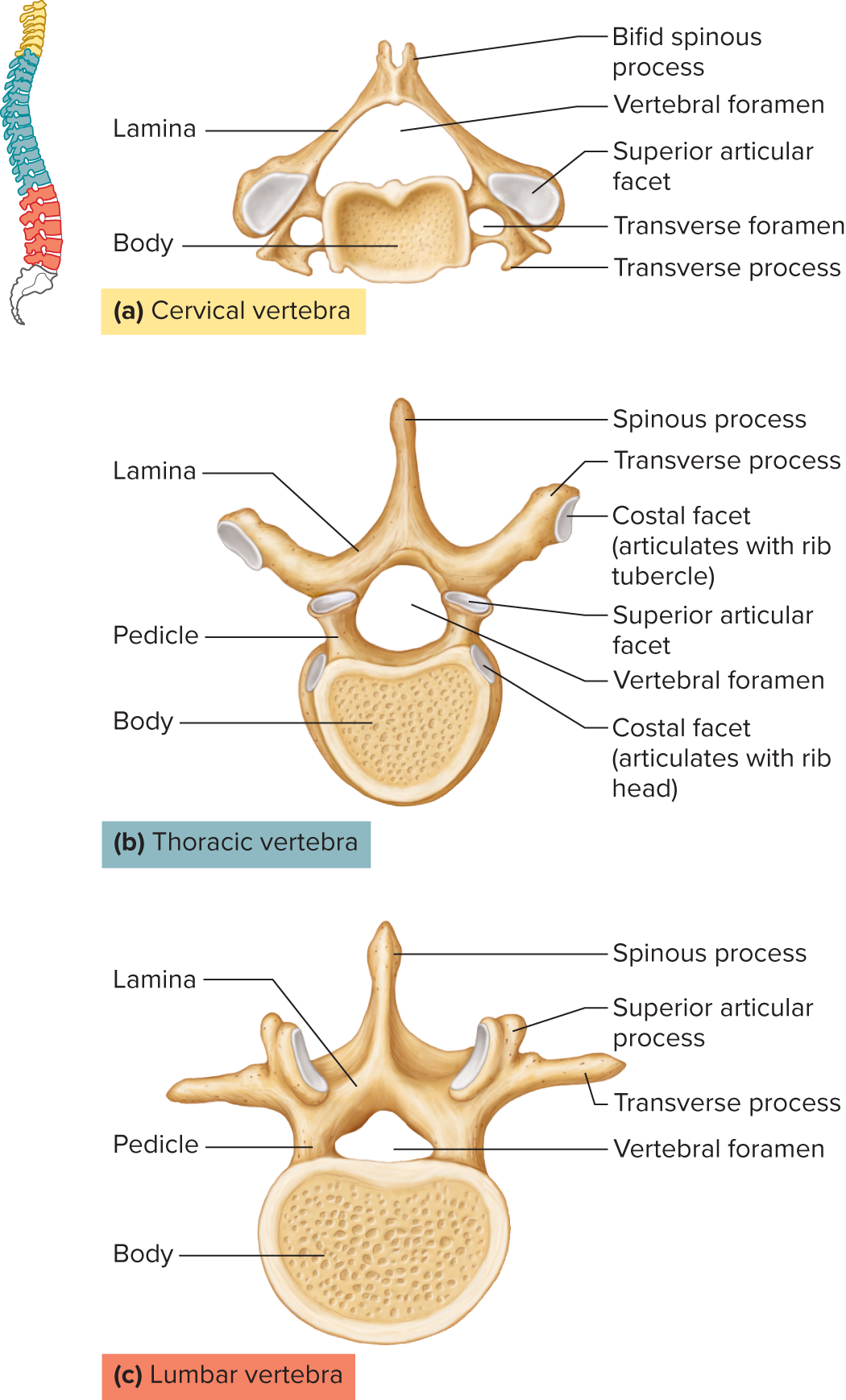
what happens if the laminae of the vertebrae do not unit during development
the vertebral arch remains incomplete, causing a condition called spina bifida
transverse processes
project laterally and posteriorly
ligaments and muscles attached to the dorsal spinous process and the transverse processes
projecting upward and downward from each vertebral arch are superior and inferior articular processes
cervical vertebrae
the transverse processes of only the cervical vertebrae have transverse foramina, which are passageways for blood vessels to and from the brain
spinous processes of second through sixth cervical vertebrae are uniquely forked (bifid) .. provides attachments for muscles
seventh cervical vertebra called the vertebra prominens bc it’s more prominent than those of the first six cervical vertebrae. easily found at base of neck + serves as landmark for locating other vertebral parts
atlas
first vertebra
supports the head
no body or spinous process
appears as a bony ring with two transverse processes
axis
second cervical vertebra
bears toothlike dens (odontoid process) on its body
lies in the ring of the atlas
thoracic vertebrae
each T vertebrae has a long, pointed spinous process which slopes downward
thoracic vertebrae except T10-T12 have two costal facets that articulate with ribs
lumbar vertebrae
larger and stronger bodies to support more weight than the vertebrae above them
sacrum
triangular structure composed of five fused vertebrae that forms the base of the vertebral column
spinous processes of these fused bones form a ridge of tubercles
to the sides of the tubercles are rows of openings, the posterior sacral foramina, which nerves and blood vessels pass through
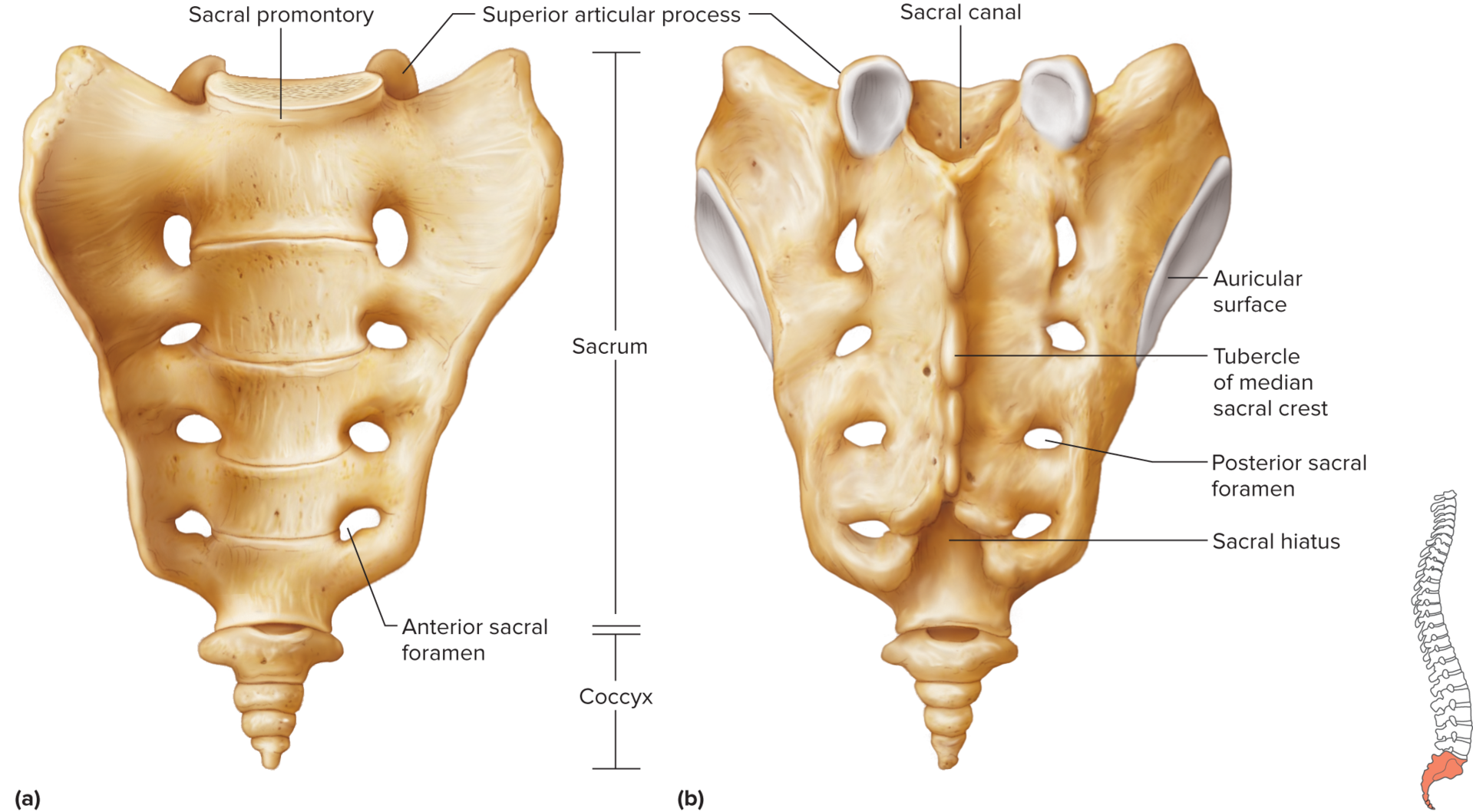
coccyx
tailbone
lowest part of the vertebral column
typically composed of four fused vertebrae
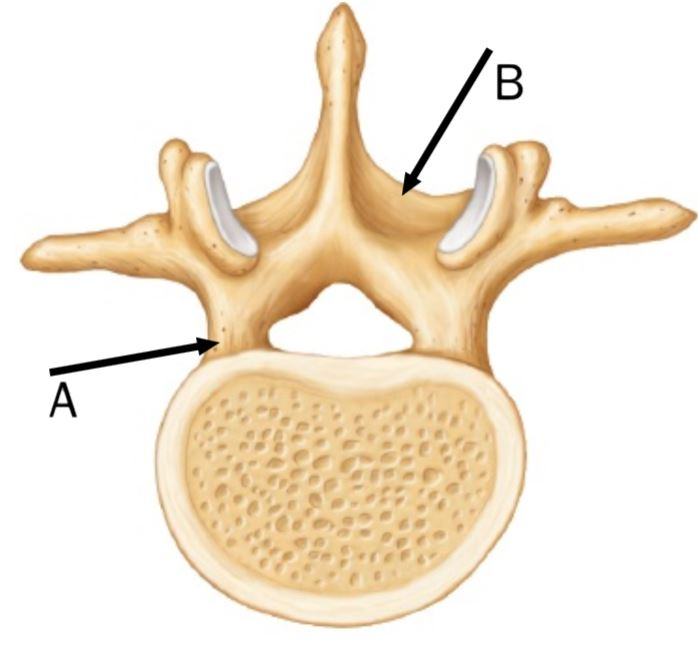
A - pedicle; B - lamina
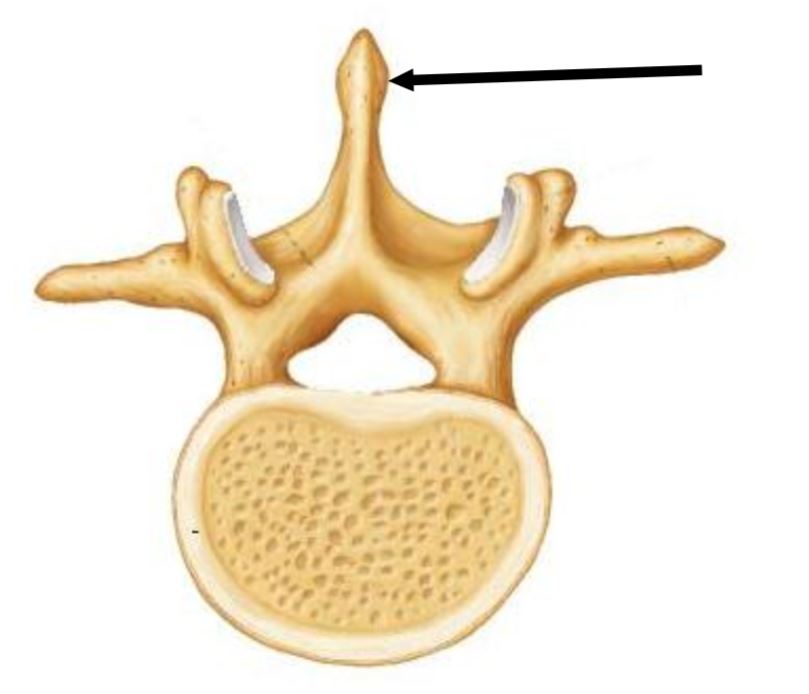
spinous process
how many vertebrae of cervical, thoracic, and lumbar?
7 cervical
12 thoracic
5 lumbar
two plates called lamina arise from the pedicles and fuse in the back to become a ___
spinous process
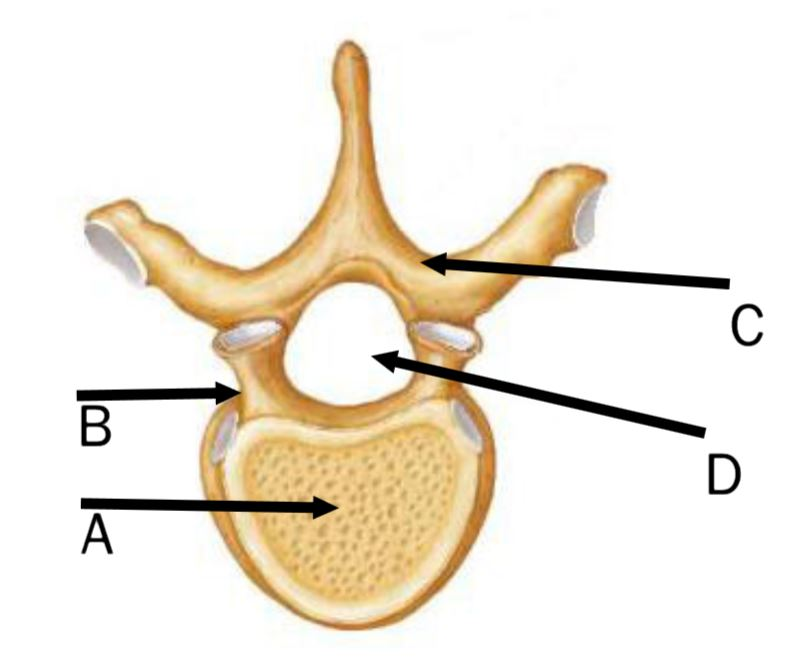
A - body
B - pedicle
C - lamina
D - vertebral foramen
what structure of a typical vertebra projects laterally and allows for ligament and muscle attachment?
transverse process
in a vertebra, two plates called ___ extend from the pedicles and fuse into a spinous process.
laminae
what structure is only found in the cervical vertebrae and not in other vertebrae?
transverse foramina
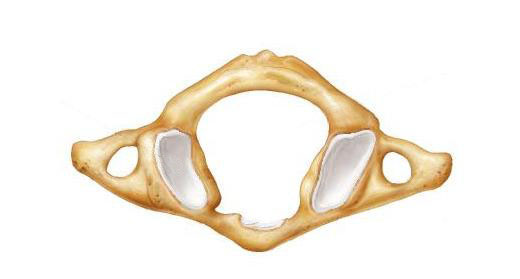
atlas
what structure on the axis projects upwards and allows for rotation or turning of the head?
dens
spinal nerves pass through the ____ foramina of the vertebral column.
intervertebral

which is the dens or odontoid process
B
characteristics of cervical vertebrae
transverse foramina
bifid spinous process
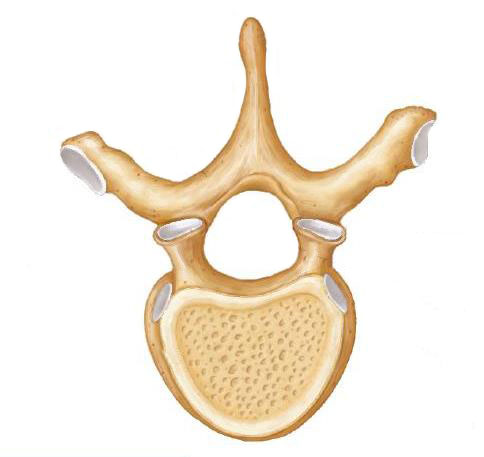
what type of vertebra?
thoracic vertebra
how does the spinous process of a thoracic vertebra differ from those of other vertebrae?
it is long and points downward
in the sacrum, the vertebral foramina of the fused vertebrae form what structure?
sacral canal
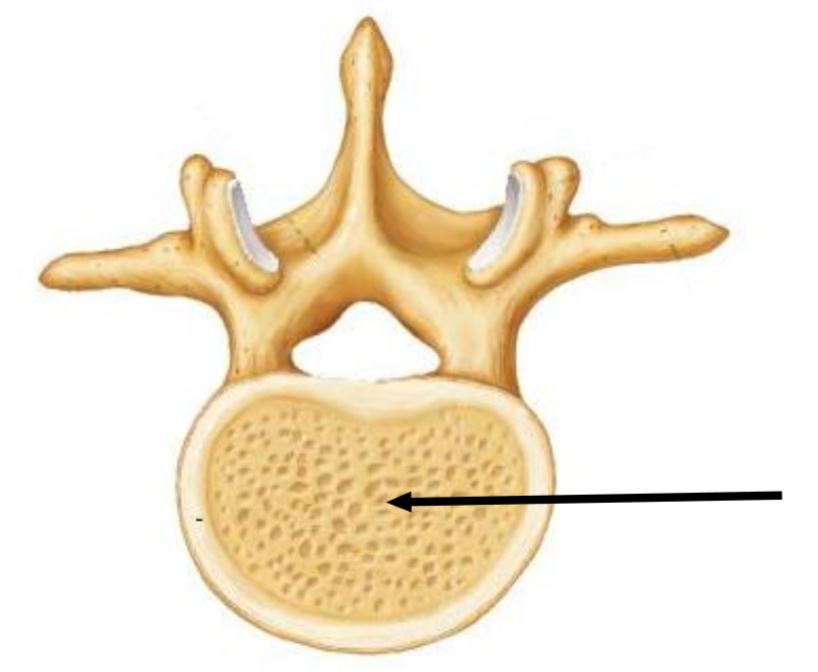
body of a lumbar vertebra